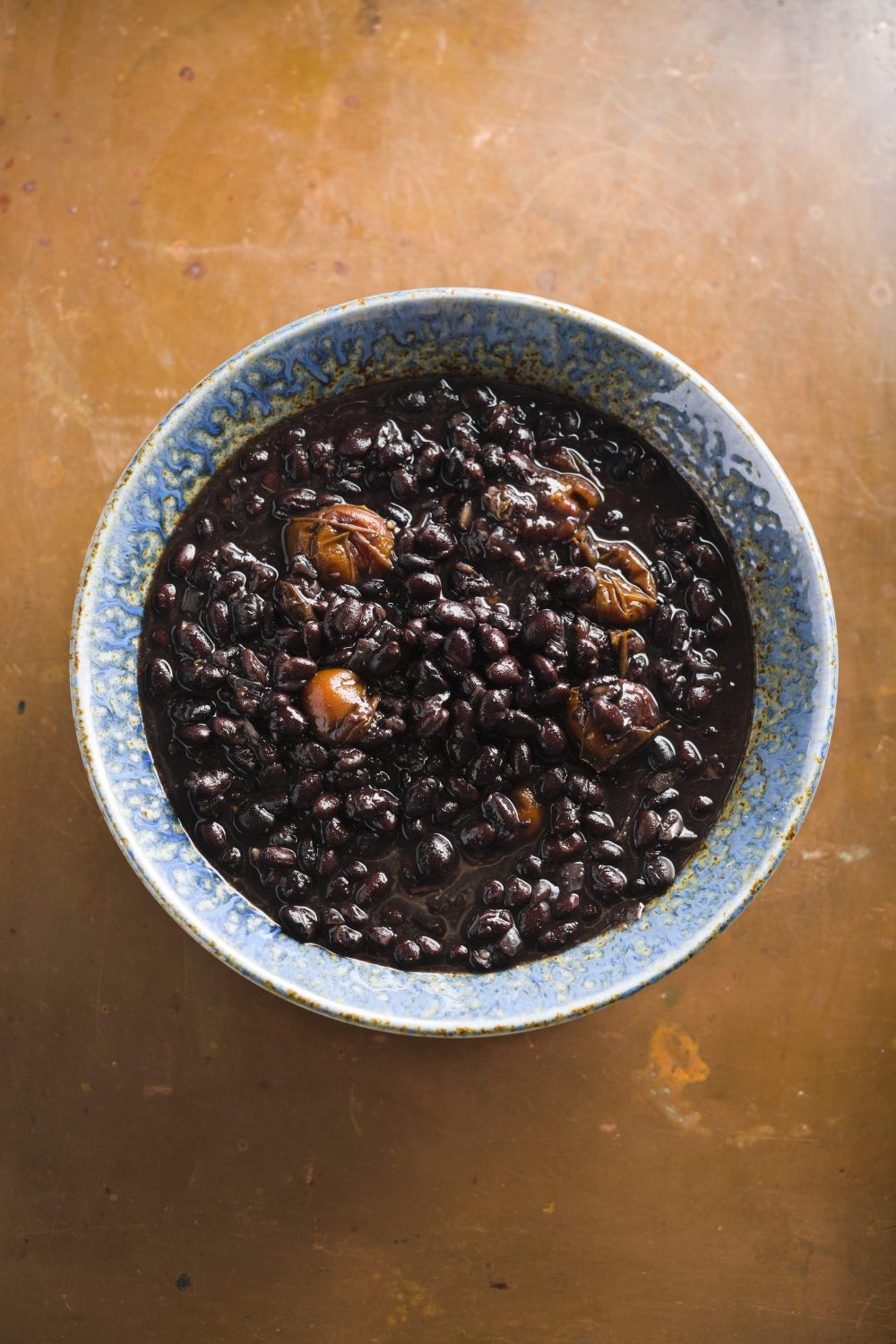The Instant Pot has changed the way we cook, particularly the way we cook dried beans. The days of needing an overnight soak are gone. Likewise, the need to plan ahead. In the Instant Pot, beans go from dry to creamy in under an hour.
The basic black bean recipe in our new cookbook, Milk Street Fast and Slow: Instant Pot Cooking at the Speed You Need, is flavored with tomatoes, garlic and chili powder. It’s loosely based on beans Christopher Kimball ate while traveling in Oaxaca and Mexico City. Whether you pressure cook or slow cook them—almost every recipe in the book includes instructions for both ways—they are delicious served on their own with a few warm tortillas, salsa and avocado.
For a richer dish, add sautéed bacon, crisped and crumbled fresh chorizo or leftover roasted pork (this roasted pork shoulder is perfect). The beans also can be mashed into refried beans, pureed into soup with a little sautéed garlic and splash of dry sherry, or rolled with shredded chicken and baked into enchiladas with a simple sauce and cheese.
Instant Pot Black Beans
As with any bean, black beans should be rinsed well and sorted before cooking. Feel free to add crumbled Mexican oregano or chopped cilantro stems to the beans before cooking, reserving the leaves for garnish.
2 cups (1 pound) dried black beans, rinsed and drained
1 large white or yellow onion, chopped
1 pint grape or cherry tomatoes
1 head garlic, outer papery skins removed, top third sliced off and discarded
1 tablespoon chili powder
3 bay leaves
Kosher salt
START
In a 6-quart Instant Pot, stir together the beans, onion, tomatoes, garlic, chili powder, bay, 1 teaspoon salt and 5 cups water, then distribute in an even layer.
FAST
Lock the lid in place and move the pressure valve to Sealing. Select Pressure Cook or Manual; make sure the pressure level is set to High. Set the cooking time for 35 minutes. When pressure cooking is complete, allow the pressure to reduce naturally for 20 minutes, then quick-release the remaining steam by moving the pressure valve to Venting. Press Cancel, then carefully open the pot.
SLOW
Select More/High Sauté and bring the mixture to a boil. Press Cancel, lock the lid in place and move the pressure valve to Venting. Select Slow Cook and set the temperature to Less/Low. Set the cooking time for 7 to 8 hours; the beans are done when fully tender. Press Cancel, then carefully open the pot.
FINISH
Remove and discard the bay. Using tongs, squeeze the garlic cloves from the head into the beans and stir to combine. Taste and season with salt.
To Use
Chipotle Refried Beans: To turn the whole beans into creamy refried beans for quesadillas, enchiladas, tostadas and tortas, mash 3 to 4 cups cooked beans with a potato masher, adding cooking liquid as needed to achieve a smooth consistency (you also can puree them in the food processor or blender). In a large nonstick skillet over medium, combine 3 minced cloves garlic with 2 to 3 tablespoons olive oil, lard or coconut oil. Once the oil is shimmering and the garlic is fragrant, add 1 to 2 chopped chipotle chilies in adobo (or 1 to 2 teaspoons chipotle powder), 1 teaspoon ground cumin and the bean puree. Cook, stirring frequently, until thickened and beginning to brown, 8 to 10 minutes. Season with brown sugar and salt.
Austin-Style Migas: This is a popular breakfast dish in Austin, though it works for any meal. Consider this a rough guide. In a large nonstick skillet over medium, sauté 1 chopped medium red onion in olive oil until softened and just beginning to brown. Add a couple minced cloves garlic and chopped fresh or pickled jalapeños, then cook until fragrant, about 1 minute. Add 8 to 10 beaten eggs and 2 to 4 handfuls of lightly crushed tortilla chips. Cook, stirring often, until the eggs have just set. Stir in 1 to 1½ cups well-drained cooked black beans, followed by shredded Monterey Jack or colby cheese and a handful of chopped fresh cilantro, stirring gently until the cheese has melted. Serve with diced avocado, salsa, toasted pumpkin seeds and additional tortillas to scoop it up.
Sign up for our newsletter to get more tips on batch cooking.
Join the conversation on Facebook, Twitter, Instagram and Pinterest.




